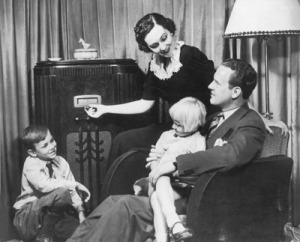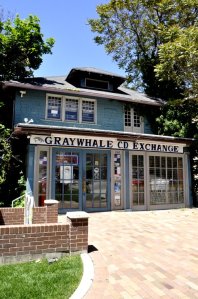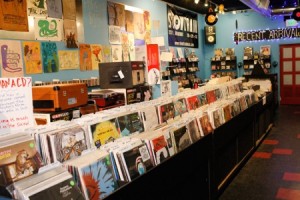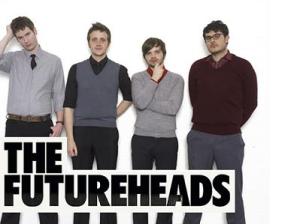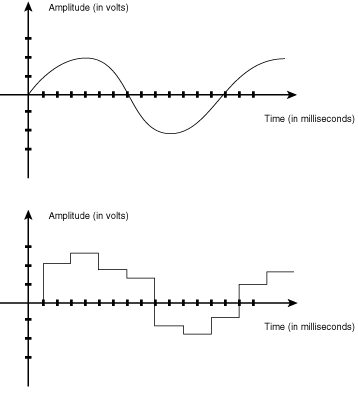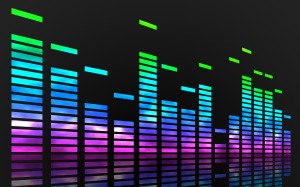
Hi all. Mr. Brinton asked me to guest-author an article for The Polysonic Journal and I’m glad to have a chance to throw in my two bits about audio, even if it might only be tangentially related to the rest of the content on Tom’s blog. Much of what Tom has already said relates to the physics of sound—and truth be told, I’m happy to let him keep romping in that green pasture. He knows more about that stuff, anyway. What I’d like to do instead is spotlight a band (a single musician, really) who covered miles of sonic territory in a relatively short span of years. Their recording techniques are the stuff of legend, much of their work remains very radio-friendly, and chances are you’re probably familiar with at least one of their tunes. But if you’re not, that just gives me all the more reason to cackle while rubbing my hands together. After all, it’s not every day that I get to introduce my friends to one of my favorite bands: Electric Light Orchestra.
To appreciate the audio-related contributions ELO made to the music industry, I think it’s important to understand the reason these boys from Birmingham, England formed a band in the first place. It was the late 60’s, and musicians Roy Wood, Jeff Lynne, Bev Bevan, and Richard Tandy were (in Lynne’s own words) “sort of fed up with playing the usual style of rock and roll—the three guitars, bass…that sort of stuff” and envisioned instead a new genre blending strings and horns with traditional rock instrumentation. Led by Wood and Lynne, the newly-christened Electric Light Orchestra first performed on April 15, 1972.
But innovation is a bumpy road, and the young ELO certainly experienced its share of potholes. Roy Wood left the band during the recording sessions for the band’s second album, taking one of the cellists with him. ELO underwent a few lineup changes, and Jeff Lynne had to step up and assume several roles simultaneously (lead singer, songwriter, frontman, and producer). And then there were the sound issues. Oh, the sound issues. At that time, putting violins and cellos in the same band as electric guitars was like locking a tiger in the same room as a three-legged pig and then telling them, “Play nice, you two.” Basically, the signal strength of an electric guitar far exceeds that of an amplified acoustic instrument like a cello, so early on in the band’s history, string players found themselves drowned out onstage. But Lynne and his fellows soldiered on and as their fan base improved, so did amplification technology. This allowed for better sound both inside and outside the studio, though the live mix was still quite rough. Playing live, after all, was more a way to promote new albums than anything else.
With each successive album, Electric Light Orchestra’s sound became more defined and vibrant—thanks in no small part to Jeff Lynne’s studio production values and his seemingly inexhaustible fountain of songwriting ideas. During one three-and-a-half week burst of inspiration, for example, Lynne penned 17 songs that would become ELO’s 1977 album Out Of The Blue. The album went Platinum four times. In all, ELO released 12 albums during their time together, selling in excess of 50 million copies. Even after the band’s informal dissolution in 1986, several members of the band continued playing together under similar monikers like ELO Part II and The Orchestra. To me, this indicates that members of Electric Light Orchestra knew that they had been part of something special.
If I’ve piqued your interest in ELO with the above endorsement, you might be saying “12 albums?! That’s a pretty big mountain to climb! Where would I begin? Any suggested tracks?”
Well, it’s funny you should ask. Pencils ready!
I would start with ELO’s 1976 album A New World Record. For me, this is the album where their sound really started to gel. Suggested tracks? “Telephone Line,” “Livin’ Thing,” and “Do Ya.” The second track in particular showcased the blissful marriage of symphony and rock.
After you’ve warmed up, jump to the 1979 album Discovery. During this phase, ELO had really appropriated the disco groove, clearly heard on tracks like “Shine A Little Love” and “Last Train To London.” This catchy album closes with the band’s biggest hit, “Don’t Bring Me Down.” Awesome.
You’re now ready for your graduate studies in ELO. Listen to the 1977 album Out Of The Blue. This is the one Lynne wrote in three-and-a-half weeks, remember? The LP opens with the thrilling exercise “Turn To Stone,” followed closely behind by other notable tracks like “Sweet Talkin’ Woman” and “Across the Border.” There’s even a four-movement “Concerto for a Rainy Day,” which concludes with “Mr. Blue Sky.”
Are the above suggestions all-inclusive? By no means—and that’s why it’s hard for me to stop when I start explaining why I love Electric Light Orchestra. They produced some really great music during their time and Jeff Lynne’s enduring status as a lauded record producer is one proof of his technical prowess; in fact, George Harrison of The Beatles stated that ELO is what they (The Beatles) would have sounded like had they not disbanded. But the greatest proof of all is the music itself—which is why I’ve included this vid to get you started. Take care, and keep exploring that sonic landscape.
—
Rob Callan is a radio host at Classical 89 KBYU-FM and a life-long music enthusiast.

